When we picture dinosaurs, we often imagine swift predators like Velociraptor or towering giants like Brachiosaurus. However, some dinosaurs evolved incredible defensive adaptations that made them walking fortresses of their prehistoric world. These heavily armored creatures developed specialized body structures that protected them from even the most fearsome predators of their time. Their tank-like builds included bony plates, spikes, clubs, and thick osteoderms that transformed them into living defensive systems. Let’s explore six remarkable dinosaurs whose evolutionary adaptations made them nature’s original armored vehicles, demonstrating how various species independently developed tank-like features across different dinosaur lineages.
Ankylosaurus: The Armored Living Tank
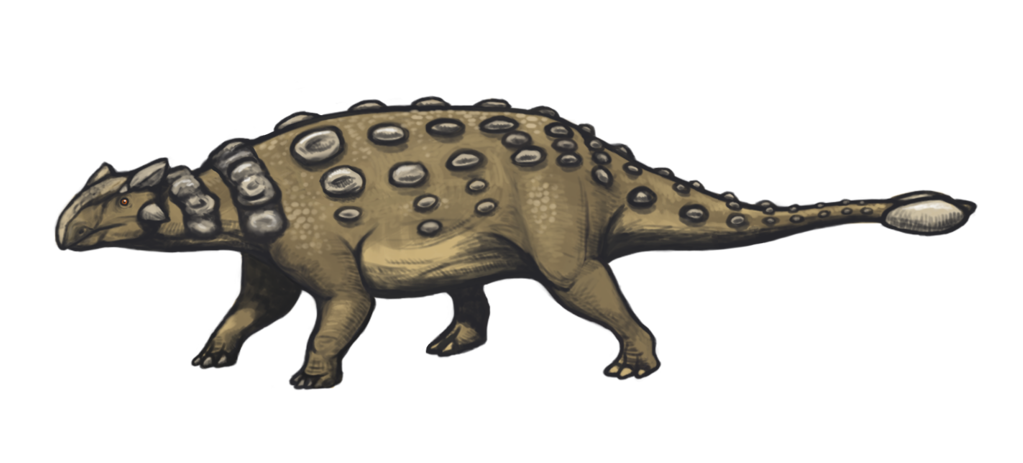
Ankylosaurus stands as perhaps the most iconic armored dinosaur, living up to its name which literally means “fused lizard.” This enormous herbivore, reaching lengths of up to 30 feet and weighing approximately 8 tons, roamed North America during the late Cretaceous period about 68-66 million years ago. What made Ankylosaurus truly tank-like was its extraordinary defensive system – its entire back was covered with large, bony plates embedded in its skin, creating a solid shield protecting its vital organs. Its most formidable weapon was the massive club at the end of its tail, composed of fused bones and covered with keratin, which could deliver devastating blows to any would-be predator. Even its head was protected by thick, bony plates, and its eyelids contained small armor plates, leaving virtually no vulnerable spots. This walking fortress likely had little to fear from even the largest tyrannosaurs of its time.
Stegosaurus: The Plated Defender
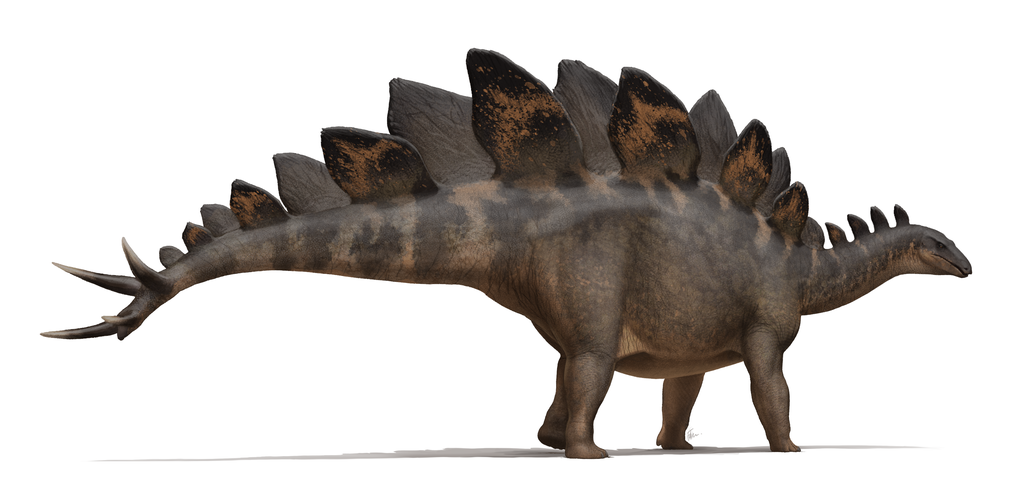
Stegosaurus, whose name means “roofed lizard,” represents one of the most distinctive tank-like dinosaurs that ever lived during the Late Jurassic period about 150 million years ago. This herbivore’s most recognizable feature was the double row of alternating vertical plates that ran along its back and tail, with some plates reaching over two feet in height. While scientists once believed these plates primarily served for temperature regulation, many now suggest they also functioned as impressive defensive displays to make the dinosaur appear larger and more intimidating to predators. The business end of Stegosaurus featured a formidable defensive weapon called a thagomizer – a collection of four to eight long spikes at the end of its tail that could deliver potentially lethal blows to attackers. Despite its heavily armored appearance, Stegosaurus had a remarkably small brain relative to its body size, roughly the size of a dog’s brain in a dinosaur that could reach 30 feet in length and weigh up to 5 tons.
Euoplocephalus: The Well-Armored Beast
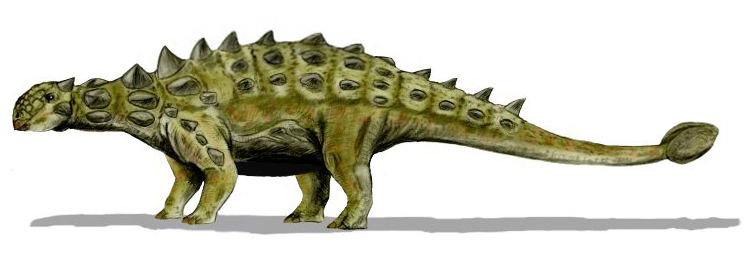
Euoplocephalus takes armored dinosaurs to another level with perhaps the most comprehensive defensive system of any known ankylosaur. Living during the Late Cretaceous period approximately 76-70 million years ago in what is now North America, this 20-foot-long herbivore was covered in armor from head to tail. Its most distinctive feature was the elaborate mosaic of bony plates called osteoderms that fused together to create a continuous shield across its back and sides. Unlike some other armored dinosaurs, Euoplocephalus also possessed extensive armor protecting its belly, minimizing vulnerable areas. The dinosaur’s skull was remarkably well-protected with bony coverings over the top and sides, including armored eyelids that could close like shutters to protect its eyes during confrontations. The finishing touch to this living tank was a massive tail club that could swing with tremendous force, capable of breaking bones of even large predatory dinosaurs that might have considered attacking this walking fortress.
Nodosaurus: The Bumpy Armored Pioneer

Nodosaurus, whose name appropriately means “knobbed lizard,” represents one of the earlier forms of heavily armored dinosaurs, living during the Cretaceous period about 110-100 million years ago in North America. Unlike its later relatives that evolved tail clubs, Nodosaurus relied solely on its extensive body armor for protection. Its entire back was covered with large, bony nodules and plates embedded in its skin, creating an almost continuous shield protecting its body from predatory attacks. Recent fossil discoveries have revealed that the armor of Nodosaurus was surprisingly sophisticated, with complex patterns of larger protective plates surrounded by smaller, interlocking pieces that allowed for some flexibility while maintaining defensive integrity. The dinosaur’s shoulders featured particularly prominent spikes that would have deterred attacks from the sides. Paleontologists have been amazed by the preservation quality of some Nodosaurus specimens, which provide unprecedented insights into the actual appearance and arrangement of dinosaur armor that typically doesn’t preserve well in the fossil record.
Saichania: The Beautiful Tank

Saichania, whose name ironically means “beautiful one” in Mongolian, was one of the most heavily armored dinosaurs ever to walk the Earth during the Late Cretaceous period about 80-75 million years ago. This massive ankylosaur, reaching lengths of up to 23 feet, lived in what is now Mongolia’s Gobi Desert and evolved extraordinary defensive adaptations for surviving in its challenging environment. What makes Saichania particularly impressive was not just its extensive body armor consisting of large, bony plates and spikes covering its back, but also its unusually complex respiratory system. Recent studies of its skull reveal specialized nasal passages that likely helped filter the dusty desert air and regulate body temperature, giving this tank-like creature exceptional environmental adaptability on top of its defensive capabilities. Saichania’s armor included rows of spikes projecting outward from its sides, shoulder armor that extended beyond its body width, and a characteristic tail club that made it a formidable opponent for any predator. Some paleontologists believe its armor was not just defensive but might have also played a role in temperature regulation in the extreme desert environment.
Panoplosaurus: The Fully Armored Colossus
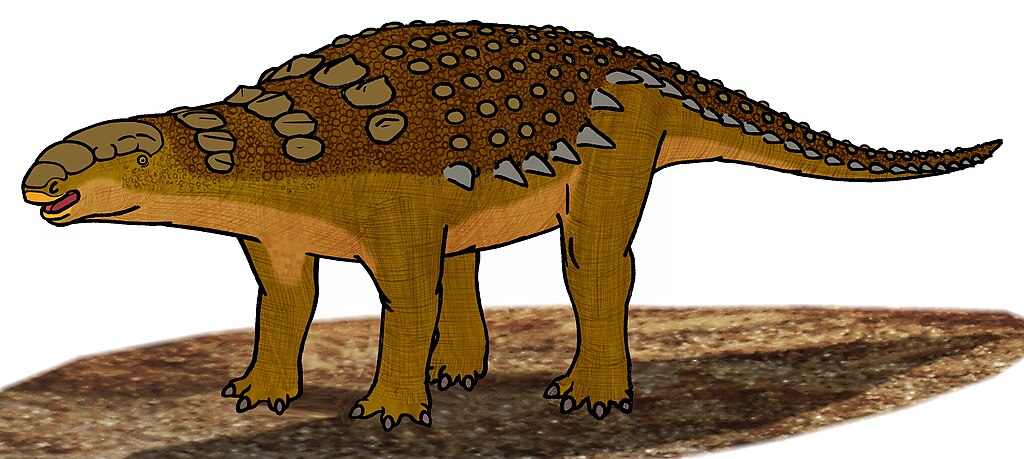
Panoplosaurus, meaning “completely armored lizard,” lived up to its name as one of the most comprehensively protected dinosaurs of the Late Cretaceous period about 76-74 million years ago in what is now western North America. This nodosaurid dinosaur, measuring approximately 23 feet long and weighing around 3.5 tons, lacked the tail club of its ankylosaur relatives but compensated with perhaps the most extensive body armor of any dinosaur. Its most distinctive feature was the full-body coverage of its armor system, with virtually no area left unprotected, including specialized smaller armor pieces protecting areas around the neck and limbs that were typically vulnerable points in other armored dinosaurs. Unique to Panoplosaurus were the large, flat, oval-shaped armor plates covering its sides that overlapped like shingles, creating an almost impenetrable barrier against attacks. Recent fossil discoveries have revealed that Panoplosaurus had particularly robust forelimbs, suggesting it might have used digging both for foraging and possibly creating defensive positions when threatened, adding behavioral defense strategies to its impressive physical armor.
The Evolutionary Arms Race
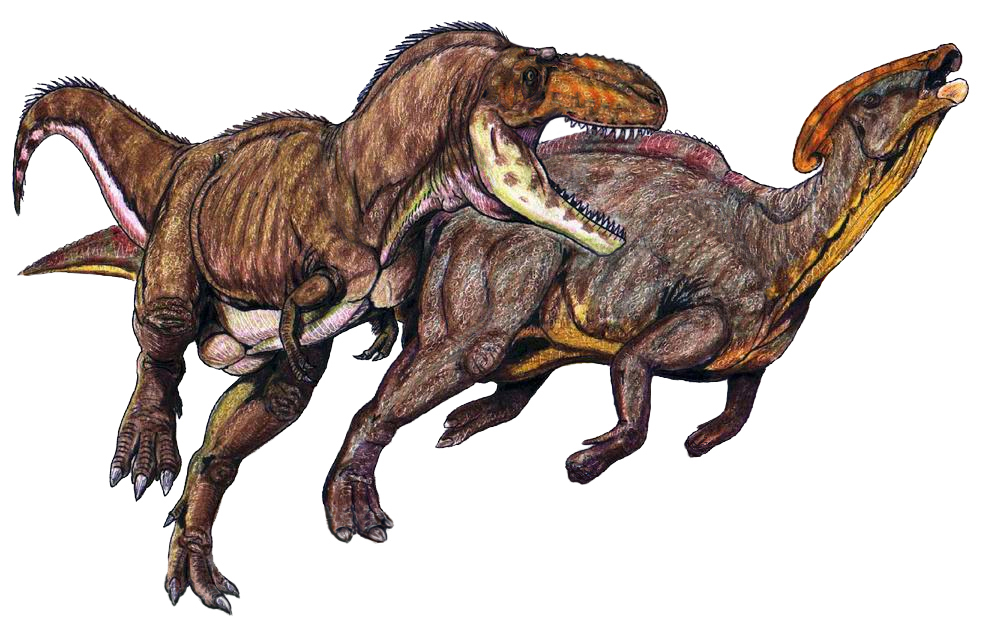
The development of tank-like bodies in dinosaurs represents a classic example of an evolutionary arms race between predators and prey. As carnivorous dinosaurs evolved stronger jaws, larger teeth, and more sophisticated hunting strategies, herbivorous species responded with increasingly effective defensive adaptations. This evolutionary pressure explains why we see armored dinosaurs becoming progressively more protected over time, with later species like Ankylosaurus exhibiting more comprehensive defensive systems than earlier armored dinosaurs. The timing of this arms race is particularly evident in the Late Cretaceous period, when some of the most heavily armored dinosaurs coexisted with the most powerful predators like Tyrannosaurus rex. Fossil evidence occasionally reveals direct interactions between these species, including instances where predator teeth have been found broken against armor plates, demonstrating the effectiveness of these defensive adaptations. The parallel evolution of similar tank-like features in different dinosaur lineages (convergent evolution) further highlights how strong the selective pressure was for developing effective body armor.
The Weight of Protection

Creating a tank-like body came with significant biological costs for these armored dinosaurs. The massive weight of their protective plates and armor required substantial energy to develop and maintain, necessitating efficient digestion systems to extract maximum nutrition from their plant-based diets. Most heavily armored dinosaurs had barrel-shaped bodies that housed large, complex digestive systems capable of processing tough, fibrous plant material to fuel their metabolic needs. The additional weight of armor also impacted mobility, with most tank-like dinosaurs being relatively slow-moving compared to their unarmored contemporaries. Studies of their limb structure reveal they had thick, column-like legs positioned directly under their bodies to support their enormous weight. Their reduced speed represented an evolutionary trade-off: what they sacrificed in agility, they gained in nearly impenetrable protection that rendered speed less necessary for survival. Some species compensated for this reduced mobility with enhanced sensory capabilities, with evidence suggesting particularly well-developed senses of smell that would have provided early warning of approaching predators.
Armor Beyond Plates: Hidden Defensive Features

While the obvious bony plates and spikes capture most attention, tank-like dinosaurs possessed additional, less visible defensive adaptations that enhanced their survival prospects. Many armored dinosaurs had reinforced skull structures with thickened bones that protected their brains from impact during confrontations with predators. Analysis of their vertebrae reveals specialized neural arches and robust vertebral processes that supported their heavy armor while providing critical protection to the spinal cord. Some species, particularly within the ankylosaur family, developed dense bone structures throughout their bodies that made even their internal skeleton more resistant to crushing forces. Beyond bone structures, evidence suggests many armored dinosaurs likely had thick, leathery skin beneath and between their armor plates, providing an additional defensive layer. Microscopic examination of fossil skin impressions indicates some species may have had keratinous coverings over their bony plates, similar to modern turtle shells, which would have enhanced the armor’s strength while potentially reducing its weight through the use of this lighter protein material.
Defensive Behaviors of Living Tanks
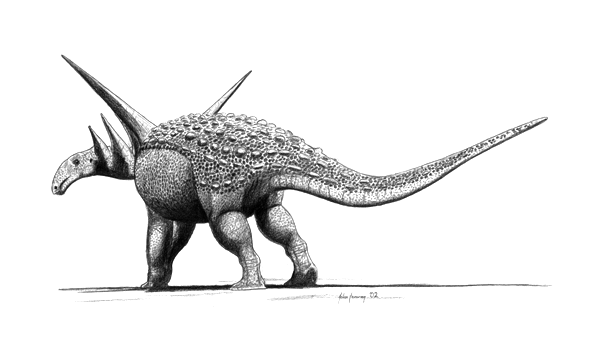
Tank-like dinosaurs likely complemented their physical armor with specialized defensive behaviors that maximized their protection when threatened. Studies of their anatomy suggest that when confronted by predators, many armored dinosaurs would have adopted a defensive posture by crouching low to the ground, protecting their more vulnerable undersides while presenting their heavily armored backs to attackers. Species with tail clubs, like Ankylosaurus and Euoplocephalus, likely positioned themselves to keep potential predators within their tail’s striking range, using the club as both a deterrent and, if necessary, an active defense weapon. Trace fossil evidence occasionally shows circular patterns that some paleontologists interpret as defensive circling behavior, where groups of armored dinosaurs might have formed protective formations with vulnerable juveniles sheltered in the center. The positioning of armor spikes, particularly around the shoulders and sides of many species, suggests they may have engaged in defensive sideways movements to present these weapons to predators approaching from various angles. Some researchers speculate that certain armored dinosaurs might have used vocalizations as warning signals, based on evidence of resonating chambers in the nasal passages of some species.
Tank Dinosaurs in Different Ecosystems

Tank-like dinosaurs evolved specialized adaptations to thrive in various prehistoric environments, with their armor sometimes modified to address specific ecological challenges. In the arid environments of Mongolia where Saichania lived, armor plates may have served a dual purpose in both defense and water conservation, potentially helping to reduce moisture loss through their large body surface area. North American species like Ankylosaurus evolved in more temperate, forested regions where their width-limiting armor arrangements allowed them to maneuver between trees while maintaining protection. Fossil evidence from different soil layers suggests that some nodosaurids preferred coastal environments, developing armor that may have provided additional buoyancy support when traversing shallow waters or soft substrates. The geographic distribution of different armored dinosaur species shows interesting patterns, with ankylosaurs generally more common in Asia and western North America, while nodosaurids were more prevalent in eastern North America and Europe, reflecting potential differences in predator pressures or available food resources. The discovery of armored dinosaur remains in a wide range of paleoenvironments, from deserts to coastal plains and forests, demonstrates the remarkable adaptability of their tank-like body design across diverse habitats.
The Social Lives of Armored Giants

Despite their formidable individual defenses, evidence suggests many tank-like dinosaurs may have also benefited from social behaviors. Fossil beds containing multiple individuals of the same armored species have been discovered, suggesting they may have traveled or fed in groups, providing additional collective security against predators. The relatively poor vision but enhanced sense of smell in many armored dinosaurs supports the theory that they may have used olfactory communication to maintain group cohesion even in dense vegetation where visual contact would be limited. Growth patterns observed in juvenile armor specimens indicate young armored dinosaurs initially had more flexible, less developed protection, suggesting they likely received additional protection from adults until their armor fully matured. Some fossil sites show traces of what appear to be feeding grounds with multiple armored dinosaur tracks, indicating they may have shared food resources and potentially used their numbers as a defensive strategy while in these vulnerable feeding positions. Research into brain cavity casts of several ankylosaur species reveals expanded areas associated with social behavior and communication, providing further evidence that these living tanks may have been more socially complex than their heavily armored, solitary appearance might suggest.
Conclusion: The Legacy of Prehistoric Tanks

The tank-like dinosaurs represent one of evolution’s most remarkable demonstrations of defensive adaptation. Through millions of years of evolutionary pressure, these herbivorous dinosaurs developed extraordinary armor systems that effectively countered even the most fearsome predators of their time. Their success is evident in their widespread fossil distribution and the long timespan they inhabited Earth before the mass extinction event that ended the dinosaur era. These prehistoric tanks also demonstrate important evolutionary principles, showing how different lineages independently developed similar solutions (convergent evolution) to the universal challenge of avoiding predation. The study of these armored giants continues to yield new insights as advanced technologies allow paleontologists to examine their fossils in unprecedented detail, revealing the complexity of their defensive systems and the biological trade-offs they navigated. In many ways, these dinosaurs represent nature’s first and perhaps most successful experiment with heavily armored mobile fortresses, a defensive strategy so effective that elements of it have repeatedly evolved in other animal groups, from modern armadillos to ankylosaur-like glyptodonts, continuing the legacy of these prehistoric tanks into the present day.



